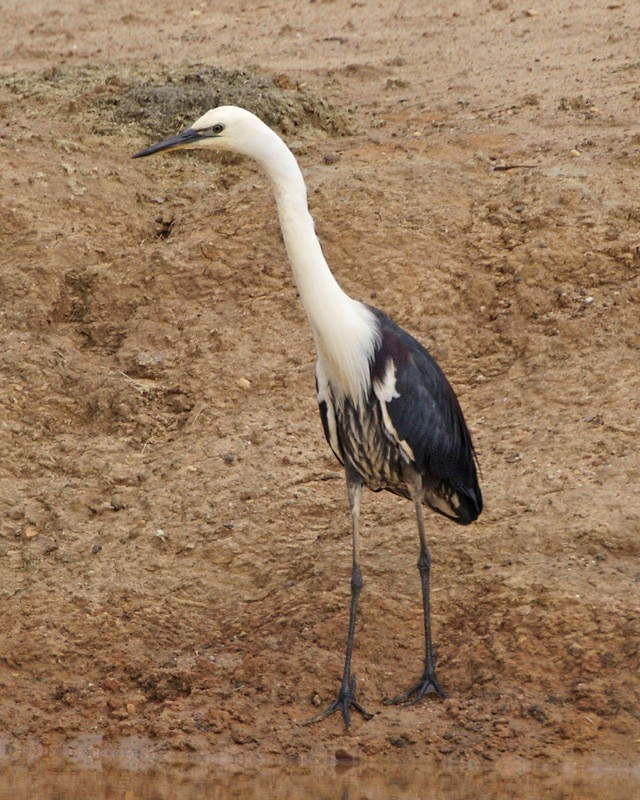White-necked Heron
A species of Great herons, Also known as Australian White-necked Heron Scientific name : Ardea pacifica Genus : Great herons
White-necked Heron, A species of Great herons
Also known as:
Australian White-necked Heron
Botanical name: Ardea pacifica
Genus: Great herons
Content
Description General Info
 Photo By Lip Kee , used under CC-BY-SA-2.0 /Cropped and compressed from original
Photo By Lip Kee , used under CC-BY-SA-2.0 /Cropped and compressed from original Description
Large water dwelling bird, diurnal animal. Slate-grey to black with distinctive black spots in the centre of the lower fore-neck and throat. During breeding season plum coloured nuptial plumes are present on the back and breast. Flight: stately, slow steady wing beats. Body size/length 76–106 cm, Wingspan 147–160 cm, Weight 860g.I have studied the bird, with many photos, estimate wingspan near 2m The bill is black and the facial skin is commonly blue or yellow. In this species of heron the eyes are green and the legs and feet also being black. Elongated neck and beak designed to reach out and catch fish, frogs, spiders and any other food source available in its habitat. Most of the head and neck is white with the black spots on the neck only visible in non-breeding individuals. In the downy young, down is longer especially on the crown of the head with the neck and head being white and the upper wing and upperparts being a light grey brown. When juvenile feathers appear they are a dark grey. In Juveniles a broad strip of grey black runs down the front of the neck. Head and neck are commonly a brownish-grey tinge. The adult feathers emerge after wear replaces the juvenile feathers. 
Size
1.06 m
Nest Placement
Tree
Feeding Habits
White-necked Heron consumes a wide variety of prey including fish, amphibians, crustaceans, insects, and small vertebrates. This adaptable feeder hunts by wading in shallow water or stalking on land. White-necked Heron exhibits siblicide as chicks compete for regurgitated food.
Habitat
White-necked Heron are primarily associated with shallow wetlands, including ephemeral or permanent water bodies such as floodplains, rice fields, and reservoirs. Their preferred habitats are characterized by water depths less than 7 cm, often including flooded grasslands, pastures, and billabongs. These birds thrive in modified landscapes such as farm dams and flooded pastures. While less commonly found in salty or brackish waters, they can be observed up to altitudes of 1800 m in mountainous regions. White-necked Heron show adaptability by relocating to new water sources when their current ones dry up.
Dite type
Piscivorous
General Info
Feeding Habits
Bird food type
Distribution Area
The white-necked heron is found throughout most of the Australian continent commonly residing in wetlands, tidal areas, shallow fresh waters, farm dams, clay pans, pastures and run off water in road side ditches. The species has thrived since modifications were made to the Australian landscape through irrigation, dams and other man made water sources. Not found in some parts of Western Australia and South Australia. Not found in arid zones, being the Great Sandy Desert, Gibson Desert, and Great Victoria Desert also the Nullabor Plain. Information regarding movement of this species is still unknown due to irruptive habits, which are commonly attributed to environmental conditions forcing the white-necked heron to act in a certain way, maintaining genetic adaptions to the harsh Australian environment in order to survive. 
Species Status
Not globally threatened.
Scientific Classification
Phylum
Chordates Class
Birds Order
Pelicans and Relatives Family
Herons Genus
Great herons Species
White-necked Heron